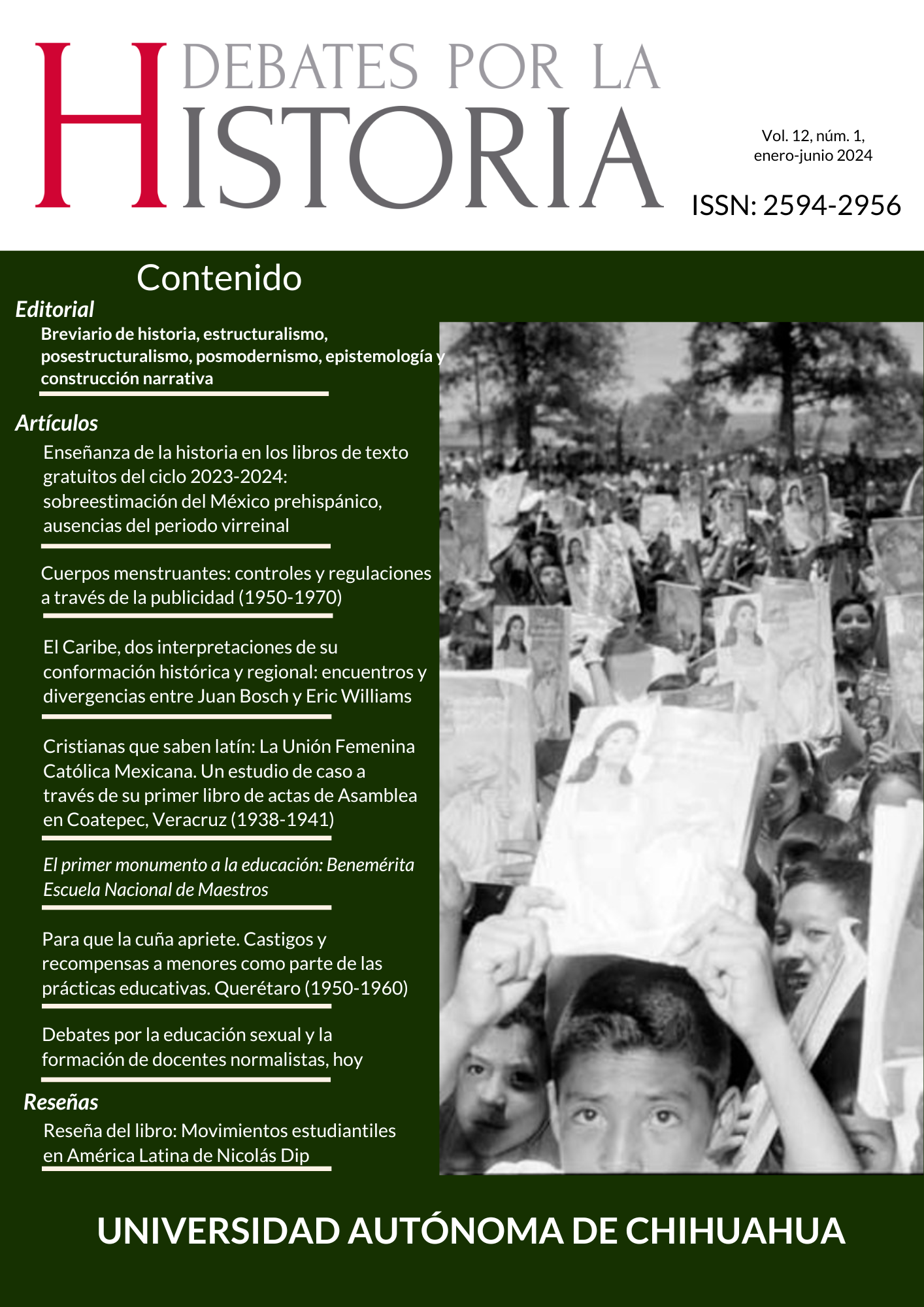Abstract
This paper proposes a historical analysis that contributes to the knowledge and dissemination of the last stage of construction of the Benemérita Escuela Nacional de Maestros, one of the most important educational institutions in Mexico in terms of teacher training due to its antiquity, tradition, the size of its school community and, especially, because of its cultural heritage: architecture, sculpture, and painting. All this shapes the normalista sense of identity. It is a school that, for more than 135 years, has specialized in the training and professionalization of primary education teachers, who have carried out their professional work with Mexican children nationwide. Its legacy began at the end of the 19th century and still in the 21st century it remains one of the five most important Normal (teacher training) schools in the country. It should be added that even today, it is the only institution of higher education in Mexico that has also served as the venue for a meeting of the United Nations Educational, Scientific and Cultural Organization (UNESCO). A central figure in all of this was Jaime Torres Bodet, who was serving as Secretary of Public Education at that time. When did this happen? What were the causes that led to that meeting? Who were, besides Torres Bodet, the main responsible parties? What were its main consequences? These are some of the questions that will be addressed in this study.
References
Díaz, P. (1910). Inauguración de la Escuela Normal para Maestros. Informe rendido por el Ingeniero contratista Teniente Coronel Porfirio Díaz. El arte y la ciencia, XII(4), 105-107.
Díaz, R. (2023) Lauro Aguirre Espinoza y el proyecto de la Escuela Nacional de Maestros. En Secretaría de Educación Pública. Cien años (pp. 303-313). SEP/INEHRM.
Kiel, L. (1910). Solemne inauguración. La Enseñanza Normal, II, 222-224.
Jiménez, C. y Hernández, M. (1979). Edificios. En C. Jiménez (Coord.), Historia de la Escuela Nacional de Maestros. 1887-1940 (pp. 193-209). SEP
Latapí, P. (2006). 60 años de la UNESCO: un aniversario en el que México tiene mucho que celebrar. Perfiles Educativos, 28(111), 112-123.
Martínez, M. (2016a). La participación de México en la UNESCO. En M. Martínez. México en los orígenes de la UNESCO. El Colegio Nacional.
Martínez, M. (2016b). Programa y finalidades de la UNESCO. En M. Martínez, México en los orígenes de la UNESCO. El Colegio Nacional.
Molano, O. (2007). Identidad cultural un concepto que evoluciona Revista Opera, (7), 69-84. https://www.redalyc.org/pdf/675/67500705.pdf
Morales, C. (2012). Palabra de normalista. Antología. Editorial Fénix.
Mosterín, J. (1993). Filosofía de la cultura. Alianza Editorial.
Pani, M. (1948). Escuela Nacional de Maestros de México. En Arquitectura. Selección de arquitectura, urbanismo y decoración, (24), 198-213.
Pérez, M. (2017). ¿Tú, él, ellos o yo patrimonializamos? Conflictos en torno a los procesos de reconocimiento del patrimonio inmaterial. En L. Lara (Coord.), Comunidades en movimiento. Aproximaciones a la expresión inmaterial del patrimonio cultural (pp. 161-188). Secretaría de Cultura del Gobierno del Estado de San Luis Potosí.
Sanz, N., y Tejada, C. (2016). México y. la UNESCO/ La UNESCO y México: Historia de una relación. UNESCO. https://unesdoc.unesco.org/ark:/48223/pf0000234777
Torres, J. (2017a). Años contra el tiempo. En Memorias I (pp. 207- 442). Fondo de Cultura Económica.
Torres, J. (2017b). La victoria sin alas. En Memorias I (pp. 443-657). Fondo de Cultura Económica.
UNESCO (1948, febrero). El Correo. Publicación de la Organización de las Naciones Unidad para la Educación, la Ciencia y la Cultura, 1(1), 1-8. https://unesdoc.unesco.org/ark:/48223/pf0000073649_spa/PDF/073649spao.pdf.multi
UNESCO (1948, diciembre). El Correo. Publicación de la Organización de las Naciones Unidad para la Educación, la Ciencia y la Cultura, I(11-12), 1-14. https://unesdoc.unesco.org/ark:/48223/pf0000073886_spa/PDF/073886spao.pdf.multi

This work is licensed under a Creative Commons Attribution-NonCommercial 4.0 International License.
Copyright (c) 2024 Raquel Díaz Galván


